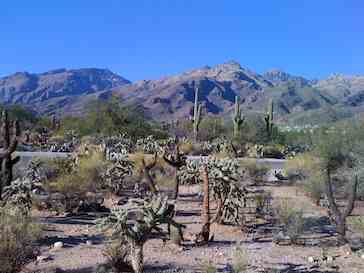
1. The secret to urban water harvesting is using the many impermeable surfaces that surround us: roofs, streets, sidewalks and driveways. The runoff from those surfaces amounts to a huge amount, if properly collected and used for irrigation. In rural situations, create as many hard surfaces as you can.
2. Good collection techniques can triple the amount of water that falls, so for example, the patch of garden that now needs irrigation would get about 12 inches a year. That’s still pretty dry, but it does just lift that patch out of a “desert” definition. Diverting rainfall from your rooftop and driveways can provide quite a bit of water for irrigation.
Recommended book on Rainwater harvesting
We suggest sealed, light-proof collection barrels to thwart mosquitoes and evaporation. The water in the collectors – and they have to be pretty big, because even a small area of rooftop collects a lot of water very quickly – can be used for hand-watering or hooked up to a hose.
3. Another part of good rainwater use is designing the landscaping so that water flows into rather than off of it. Most landscaping is planted in mounds – the reverse of what we should be doing. Instead of a mound, make a bowl-like topography that will hold the water runoff and organic matter. Leaves and grass cuttings, instead of going to the dump, will go into the depressions, improving the soil and increasing water infiltration. About 12-14 percent of the solid-waste stream is yard trimmings. Instead of going to the dump, it should be used on-site to enhance soil fertility.
4. City officials are learning to love these once-revolutionary ideas. In Tucson, the average residential street drains 1.25 million gallons a year, per mile. That’s enough water to irrigate 400 native trees per mile, one tree to every 25 feet. This converts a water-draining street to a water-harvesting street. In Nevada, you would get a third of water we have, but that’s still a significant amount of water. Here in Tucson an ordinance was just passed by the City Council that all new city roads must harvest at a minimum all the water from a half-inch rainstorm. That’s a great beginning.
They don’t have to worry about leaks, they don’t have a water bill. They’re reducing costs and they have a much more livable, beautiful community. So we get these multiple benefits.
5. Harvesting rainwater also would take some pressure off of the Colorado River by avoiding the significant evaporative losses that happen in Lake Mead. Also, rate-payers won’t have to pay for the energy used to pump the water up from the lake.
6. The Southern Nevada Water Authority is not a fan of “gray water” or used-water collection, Lancaster notes. (SNWA officials cite a study in Western Australia that showed an uptick in water consumption after homeowners installed gray-water reuse systems.) So the local water authority is not promoting gray water.
For more information on the Las Vegas discussion, go to www.harvestingrainwater.com
5 Responses
Each foot of head (height of water level to height of outlet like a faucet) only equals 0.5 psi of pressure. Furthermore, at 8 lbs per gallon even a small 500 tank weighs in at 2 tons (4,000 lbs) making platforms difficult. Also, your water will still require treatment/filtration so it’s really no different than ground water. However, rainwater is drastically better for your plants compared to ground water. Switch your ideas around and you’ll notice much happier vegetation. – By the way, build your own composting toilet for a fraction of the cost!
I have used drip irrigation off my rainwater collection system for 7 years.
Very nice post! In these rain harvesting is very essential and you have shared very useful information of changes in technology and use of rain water harvesting process in a perfect way. Even though I have two good shallow wells on my property, one of them only eight years old, a good high water table, and decent yearly rainfall, I have been researching putting in a medium sized rainwater collection system for potable water consumption. The wells I use exclusively for agricultural use and fairly soon for my washing machine and toilets (composting toilets are too expensive). I was thinking of putting one on a six foot high platform so I can have decent water flow.
Harvesting rainwater just south of tucson. Some important details should be given to the reader. At 12″ of rainfall you receive ~7.5 gallons of water. Important math when calculating needs and.options. Desert.rainwater collection is difficult due to bulk precipitation with little annual dispersal. While any collection helps it requires large amounts of storage to he effective in the desert. Also, dont collect off of.any surface. No use poisoning yourself or your plants. Collect what you can and design your gardens to be as water efficient as possible. My fruit trees get one gallon once.per.week.eack and my beds get 1 gallon per six square feet once per day. Oh, I almos forgot, do NOT use drip irrigation.
Intrigued by the last comment. Would you expand on the advice not to use drip irrigation?